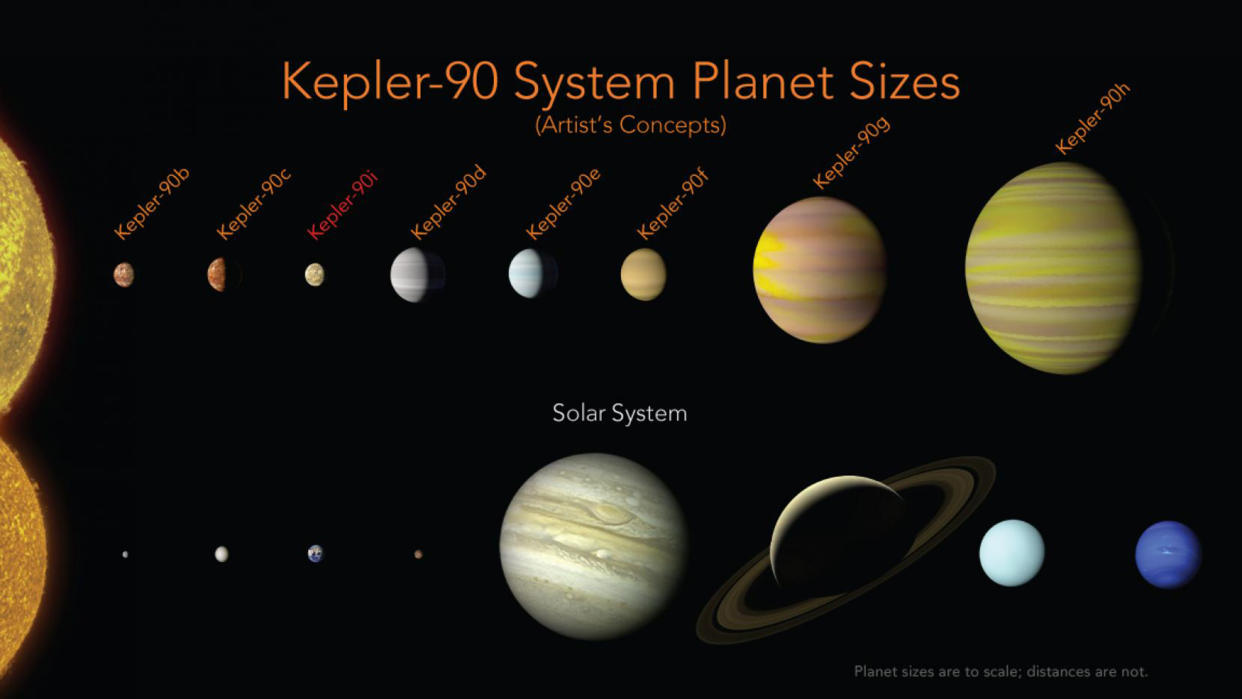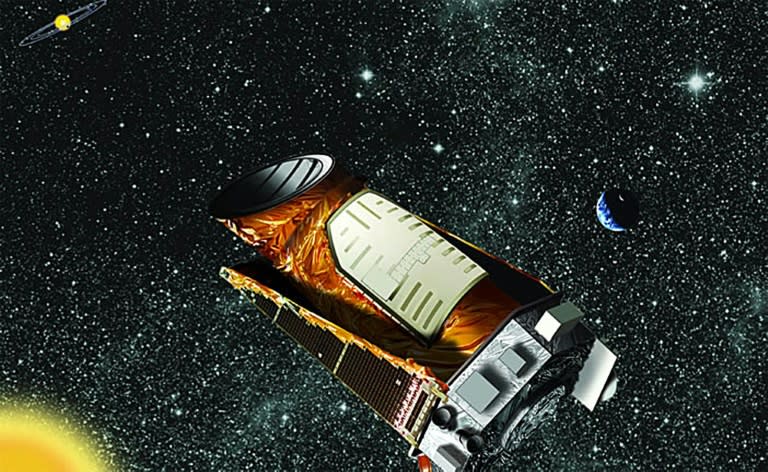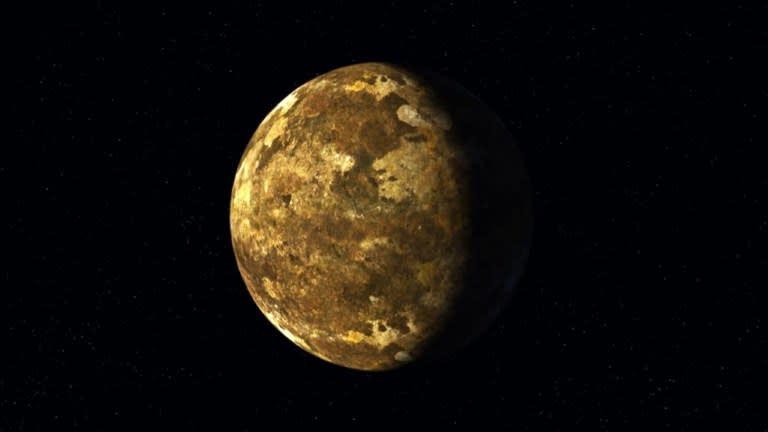NASA spots solar system with as many planets as ours - here’s why it’s important

NASA’s Kepler space telescope has spotted a distant solar system with eight planets – just like our own.
The eighth planet circling Kepler-90, a Sun-like star 2,545 light-years from Earth is Kepler-90i – a sizzling hot, rocky planet that orbits its star once every 14.4 days.
What makes the find even more important is that the planet was spotted using machine learning from Google.
Computers learned to identify planets by finding in Kepler data instances where the telescope recorded signals from planets beyond our solar system, known as exoplanets.
The technique could lead to finding even more exoplanets.

‘Just as we expected, there are exciting discoveries lurking in our archived Kepler data, waiting for the right tool or technology to unearth them,’ said Paul Hertz, director of NASA’s Astrophysics Division in Washington.
‘This finding shows that our data will be a treasure trove available to innovative researchers for years to come.’
MOST POPULAR ON YAHOO UK TODAY
‘Miracle dog’ survives after jumping off 30ft bridge in Glasgow into rocky riverbed
Tourist group slammed after building makeshift cooking stove from Great Wall of China bricks
Russia is planning to expand its nuclear arsenal to 8,000 bricks
Volunteers patrol London parks after six swans are found ‘stabbed and beheaded’
Britain’s favourite Quality Street and Roses have been revealed ahead of Christmas
The discovery came about after researchers Christopher Shallue and Andrew Vanderburg trained a computer to learn how to identify exoplanets in the light readings recorded by Kepler – the miniscule change in brightness captured when a planet passed in front of, or transited, a star.

Inspired by the way neurons connect in the human brain, this artificial “neural network” sifted through Kepler data and found weak transit signals from a previously-missed eighth planet orbiting Kepler-90, in the constellation Draco.
About 30 percent larger than Earth, Kepler-90i is so close to its star that its average surface temperature is believed to exceed 800 degrees Fahrenheit, on par with Mercury.
Its outermost planet, Kepler-90h, orbits at a similar distance to its star as Earth does to the Sun.
‘The Kepler-90 star system is like a mini version of our solar system. You have small planets inside and big planets outside, but everything is scrunched in much closer’ said Vanderburg, a NASA Sagan Postdoctoral Fellow and astronomer at the University of Texas at Austin.


